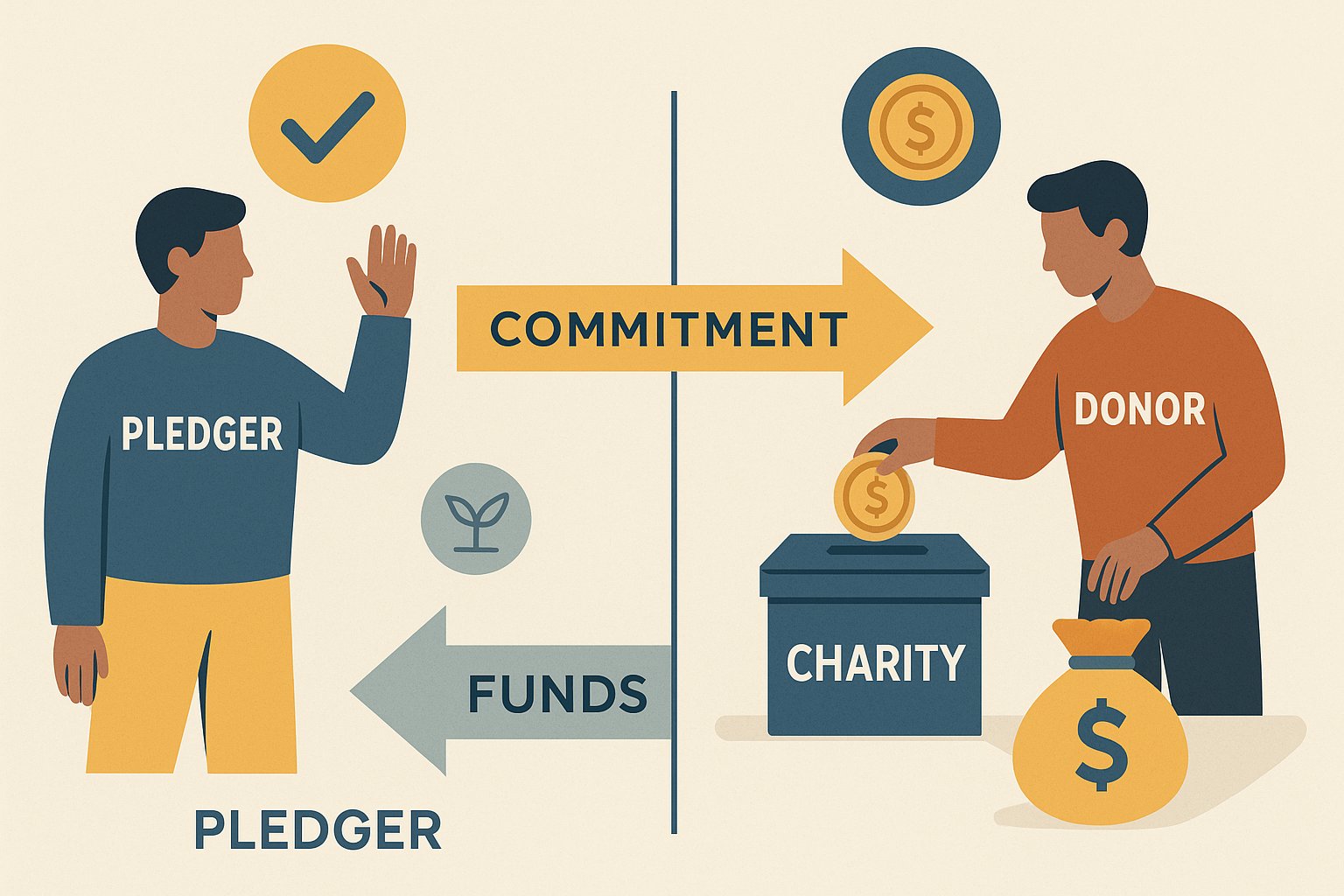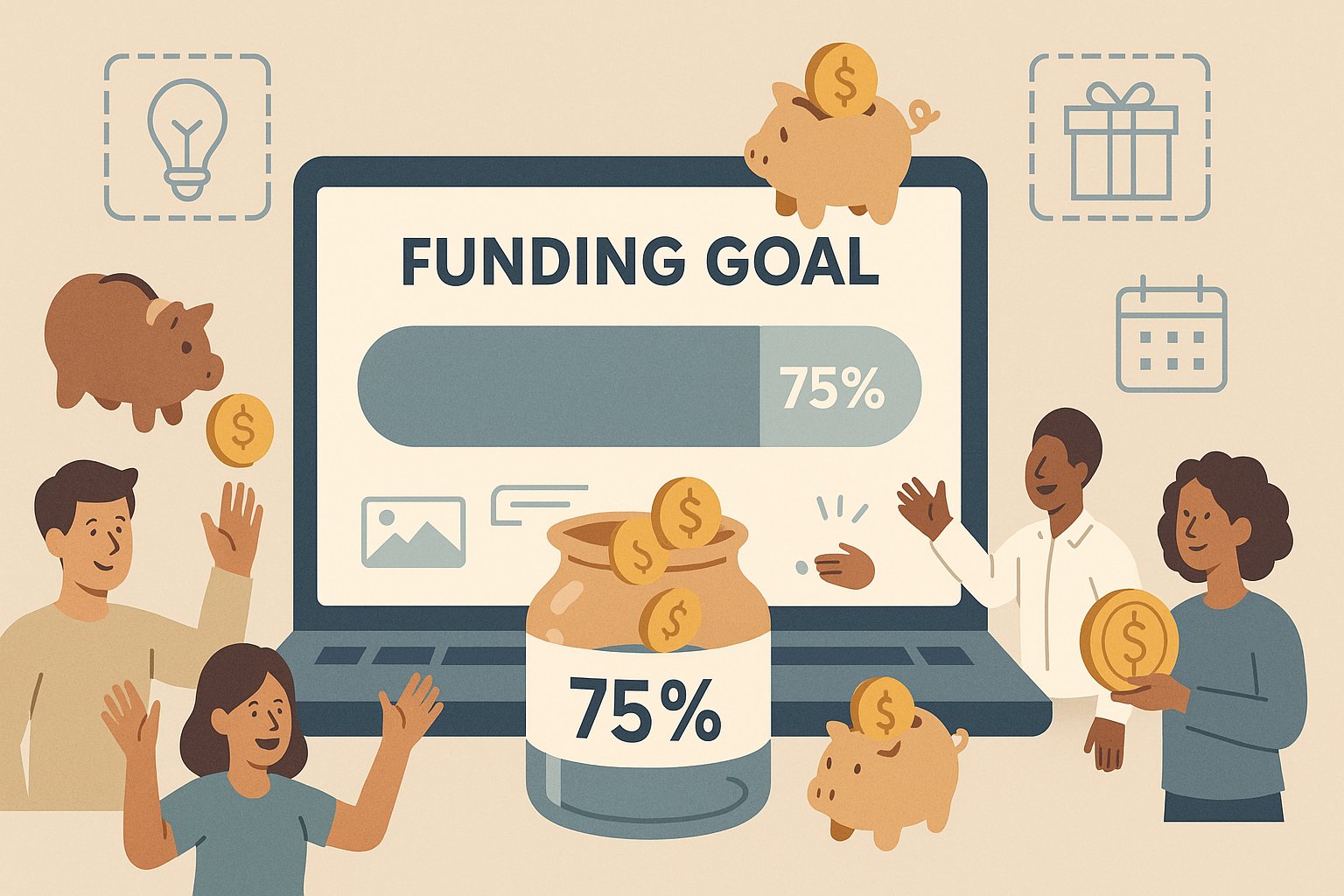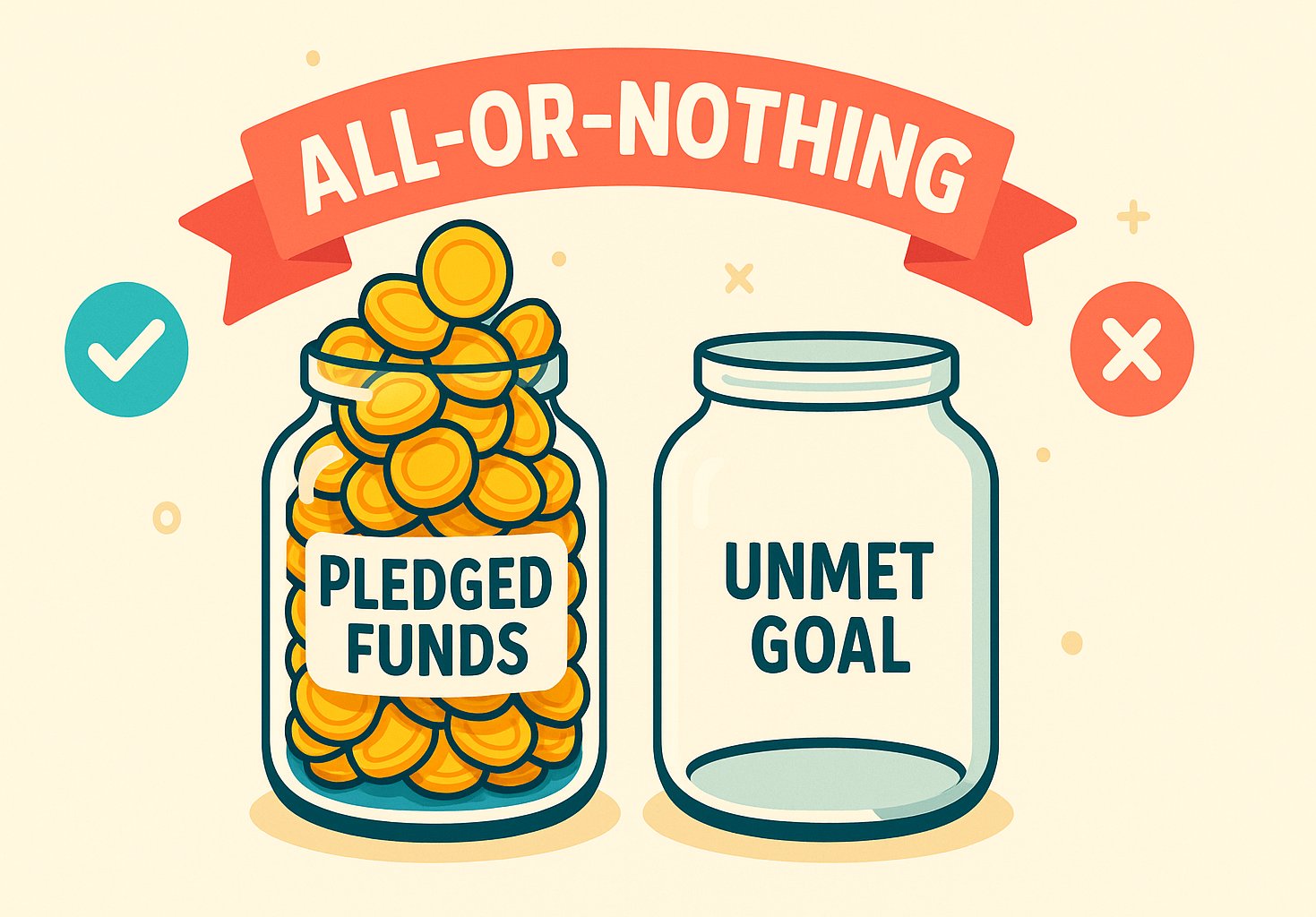Unveiling the Power of Giving and Commitment
In today’s interconnected world, the language of generosity takes on many forms—whether it’s supporting a friend’s medical fundraiser, contributing to a global relief effort, or backing a creative project on a crowdfunding platform. Two terms often surface in these contexts: pledges and donations. At first glance, they might appear interchangeable, both reflecting acts of goodwill and financial support. However, the distinction between pledges and donations runs deeper than mere semantics. Understanding how each mechanism operates, the expectations they set, and the legal and moral obligations they carry is crucial for fundraisers, campaign organizers, nonprofits, and contributors alike.
Pledges represent a commitment to give—a promise made either immediately or at a future date, often tied to specific milestones or events. They play a pivotal role in scenarios where organizers need to gauge interest, plan budgets, or unlock matching grants. Donations, by contrast, are contributions made outright, typically irrevocable and directed toward causes or projects without the need for subsequent action or confirmation. While both pledges and donations channel financial resources toward worthy endeavors, they diverge in timing, accountability, tax implications, and the psychology of giving. In this comprehensive guide, we’ll explore the defining characteristics of pledges and donations, their respective roles in fundraising campaigns, and the strategic considerations for organizers and supporters. We’ll examine real-world examples—from capital campaigns that rely on phased pledge structures to charitable drives fueled by immediate donations—and unpack best practices for maximizing engagement, ensuring transparency, and honoring commitments. Whether you’re launching a nonprofit initiative, planning a community event, or simply seeking to deepen your understanding of philanthropic terminology, this article will equip you with the knowledge to navigate pledges and donations with confidence and clarity.
Defining Pledges: Commitments on the Horizon
A pledge is fundamentally a promise to contribute a specified amount of money at a future date or upon satisfying certain conditions. Rather than transferring funds immediately, a pledger indicates their intention to support a cause, often providing a timeline or contingent terms for fulfillment. Pledges are commonplace in capital campaigns undertaken by schools, churches, hospitals, and cultural institutions, where large sums are required to construct buildings, endow scholarships, or launch major programs. In this context, organizers solicit pledges to demonstrate community buy-in and to plan cash flow as construction or program rollouts proceed. Beyond institutional fundraising, pledges also feature prominently in crowdfunding campaigns. For reward-based platforms, backers pledge an amount in exchange for tiered rewards or product pre-orders; their financial obligation is triggered only when the campaign meets its funding goal. Similarly, in equity crowdfunding, investors pledge capital that is released once regulatory conditions and minimum raise thresholds are satisfied. Political campaigns and advocacy organizations employ pledge drives, asking supporters to commit to recurring monthly contributions or one-time gifts contingent on election outcomes. Pledges carry inherent flexibility. Contributors can spread payments over multiple installments, aligning their giving with personal budgeting cycles. They also empower organizers with a roadmap of future revenue, enabling more accurate forecasting of project timelines and resource allocations. However, because pledges are promises rather than immediate transfers, they require robust systems for tracking, reminding, and collecting. Failure to follow up can result in unfulfilled commitments, derailing project plans and eroding trust among stakeholders. Therefore, successful pledge campaigns incorporate clear communication about payment schedules, simple fulfillment mechanisms—such as online portals or automated billing—and regular stewardship to thank pledgers and confirm receipt of funds.
Understanding Donations: The Gift That Becomes Real
Donations, in contrast to pledges, are contributions made and received in real time. When a donor clicks the “Give Now” button or drops an envelope containing a check into a collection box, the transaction is complete. Funds are at the immediate disposal of the recipient organization or campaign, and the donor’s obligation is fulfilled. This immediacy offers several advantages for fundraisers: donations provide instant liquidity for programming needs, simplify accounting processes, and mitigate the risk of uncollected pledges. Donation-based crowdfunding platforms such as GoFundMe and JustGiving harness this immediacy by facilitating one-click contributions to individual causes. Charitable organizations often leverage donation drives during emergencies—natural disasters, medical crises, or humanitarian relief—where rapid access to funds can mean the difference between life and death. Nonprofits conducting annual fundraisers or seasonal giving campaigns also rely heavily on donations, employing direct mail, peer-to-peer fundraising, and digital appeals to drive real-time support.
From the donor’s perspective, making a donation can be emotionally satisfying. The act of clicking “Donate” or writing a check confers a sense of closure and accomplishment. Additionally, donations to registered nonprofits may qualify for tax deductions in many jurisdictions, offering an added incentive. However, because donations are irrevocable, donors should exercise due diligence, ensuring the recipient organization’s transparency, financial health, and alignment with the donor’s values before contributing. Fundraisers, on their end, must provide clear messaging about how donated funds will be used, offer timely acknowledgments and receipts, and deliver post-donation impact reports to reinforce donor confidence and encourage repeat giving.
Timing and Tracking: From Intent to Impact
One of the most pronounced differences between pledges and donations lies in the realm of timing. A pledge sets an expectation for future payment, creating a window during which organizers must nurture the commitment to fruition. This process often involves automated reminders, personalized outreach, and straightforward payment options that convert intention into actual funds. For large-scale capital campaigns, pledge commitments may be payable over several years, with donors valuing the ability to support transformational projects at a pace that aligns with their financial capacity.
Donations, conversely, trigger immediate fund transfers. This immediacy streamlines donor accounting, as there is no need for long-term pledge documentation or installment schedule management. Organizations can recognize the full gift in the period received, leveraging the inflow to meet urgent needs or invest in growth initiatives. Yet immediate donations also demand quick action: fundraisers must process gifts, issue receipts, and deploy resources efficiently to maintain momentum and demonstrate fiscal responsibility.
Effective stewardship for pledges and donations hinges on transparent tracking systems. Constituent relationship management (CRM) platforms tailored to nonprofit operations facilitate the segmentation of pledges and donations, automate reminders for outstanding pledge payments, and generate reports that forecast cash flow. For both pledge-based and donation-based campaigns, reporting dashboards that display progress against goals—in dollars received and pledges fulfilled—motivate contributors and signal organizational competence. By treating pledges and donations as distinct yet complementary revenue streams, fundraisers can optimize collections, build donor trust, and drive sustained engagement.
Psychological Dynamics: The Commitment Continuum
From a behavioral standpoint, pledges and donations tap into different motivational drivers. Pledges engage the power of commitment: when individuals publicly declare their intention to give, they are more likely to follow through due to cognitive dissonance avoidance and social accountability. Pledge drives often harness this principle by encouraging public recognition—honor rolls, donor walls, or social media shout-outs—that reinforce backers’ identities as supporters and create positive peer pressure. Donations, on the other hand, capitalize on the immediacy of emotional response. A poignant story, a compelling video, or a time-sensitive matching grant can spur prompt action, leading donors to give without delay. The satisfaction of making a donation in the moment can trigger a positive feedback loop, where the donor feels an immediate sense of impact and is more inclined to support future appeals. Savvy campaign strategists blend both mechanisms to maximize impact. A capital campaign might launch with a multilevel pledge drive to secure cornerstone gifts, establishing momentum and credibility. Subsequently, the organization may open a public donation window, inviting a broader audience to contribute outright. Alternatively, peer-to-peer fundraisers can solicit donations from immediate networks while encouraging high-capacity supporters to pledge multi-year contributions. By understanding and leveraging the psychological nuances of commitment versus instant giving, fundraisers can orchestrate campaigns that resonate across diverse donor preferences and capacities.
Accountability and Legal Implications
Both pledges and donations carry legal and ethical considerations, although the frameworks differ. Pledges, by nature of being contractual commitments, may be enforceable under certain jurisdictions if appropriately documented. For multi-year pledge agreements, organizations often draft formal pledge forms outlining payment schedules, payment methods, and conditions for modification or cancellation. While most organizations rely on the honor system and stewardship best practices rather than litigation to collect pledges, clarity in documentation protects both parties and ensures mutual understanding.
Donations, when made to tax-exempt or charitable entities, come under regulatory oversight. Charitable organizations must comply with fundraising regulations, mint receipts that detail donation amounts and tax-deductible statuses, and adhere to use-of-funds restrictions mandated by donors or governing authorities. Misappropriation of donated funds can lead to reputational damage, loss of tax-exempt status, or legal penalties. Equally important is respecting donor intent: if a donation is given for a specific purpose—such as a scholarship fund or building project—the organization has a fiduciary duty to allocate those funds accordingly or seek donor approval for any reallocation. Crowdfunding platforms introduce additional layers of terms and conditions. They may define whether a campaign employs pledge-driven all-or-nothing funding or flexible funding structures, stipulate refund policies for unfulfilled rewards, and outline fees deducted from both pledges and donations. Campaign creators must clearly communicate these po licies to backers to avoid misunderstandings and disputes. By embedding accountability measures—such as pledge agreements, transparent financial reporting, and adherence to platform rules—fundraisers reinforce trust and long-term support.
Strategic Applications: When to Use Pledges vs Donations
Choosing between pledges and donations depends on campaign objectives, project scope, and audience profile. Pledges excel in scenarios requiring substantial upfront planning and phased cash flow, such as capital construction projects, multi-year scholarship endowments, or membership-based initiatives. They enable organizers to secure large lead gifts, model financial feasibility, and proceed with confidence that designated funds will materialize over time.
Donations are ideally suited for immediate needs, smaller-scale projects, or causes driven by urgency. Emergency relief efforts, annual operating budgets, and grassroots community drives benefit from the simplicity and speed of donation mechanisms. Immediate giving also lowers barriers to entry—donors can contribute modest amounts without long-term obligations, often leading to a broader base of supporters.
Hybrid approaches combine both tools. A nonprofit art museum may begin a building campaign by soliciting major pledges from key benefactors, then open the doors to public donations for naming opportunities or community engagement programs. An educational institution might offer donors the choice between a lump-sum donation or a multi-year pledge, accommodating diverse financial capacities while reinforcing inclusivity. By strategically deploying pledges and donations in tandem, organizations can optimize fundraising outcomes, cultivate donor loyalty, and adapt to changing economic conditions.
Best Practices for Managing Pledges and Donations
Effective management of pledges and donations hinges on robust systems, clear policies, and proactive communication. First, organizations should invest in a comprehensive CRM platform capable of tracking both pledge commitments and donation records, automating reminders for upcoming pledge payments, and segmenting supporters based on giving preferences. Second, creating standardized pledge agreements and donation acknowledgment templates ensures consistency and professionalism. Third, transparent reporting—through annual impact reports, financial statements published on websites, and periodic campaign updates—demonstrates stewardship and reinforces donor confidence. Communication cadence is equally vital. Pledgers benefit from periodic reminders and progress reports that confirm payment schedules and showcase project milestones. Donors appreciate timely thank-you letters, digital receipts with tax information, and follow-up stories illustrating the impact of their gift. Virtual and in-person events—such as donor receptions, progress tours, and webinar briefings—invite supporters to engage more deeply and feel personally connected to the cause. Finally, recognizing different giving levels through meaningful gestures—insider updates for major pledgers, donor spotlights for recurring monthly supporters, or exclusive newsletters for significant one-time givers—fosters a sense of community and appreciation. By treating pledges and donations as distinct yet complementary facets of fundraising, organizations can honor every form of support and sustain engagement over the long term.
Harnessing The Dual Forces of Pledges and Donations
Pledges and donations represent two powerful modalities of financial support, each with unique advantages, responsibilities, and strategic applications. Pledges offer the promise of future funding, enabling large-scale planning, phased project execution, and deep donor engagement over time. Donations deliver immediate resources, fueling urgent needs, day-to-day operations, and spontaneous generosity. Together, they form a dynamic duo capable of empowering organizations to dream big and deliver impact. For campaign organizers and fundraisers, mastering the art of soliciting, tracking, and fulfilling both pledges and donations is essential. It requires meticulous planning, transparent communication, legal and ethical rigor, and heartfelt stewardship. For supporters, understanding the distinction empowers choices that align with personal preferences, financial circumstances, and desired levels of commitment. As the fundraising landscape continues to evolve—driven by digital platforms, shifting donor behaviors, and emerging philanthropic trends—the interplay between pledges and donations will remain central to successful campaigns. By harnessing the complementary strengths of these two giving mechanisms, organizations and supporters alike can build enduring partnerships, tackle ambitious projects, and transform collective generosity into lasting change.




